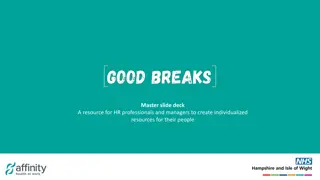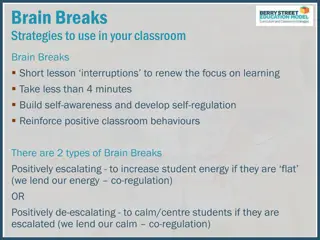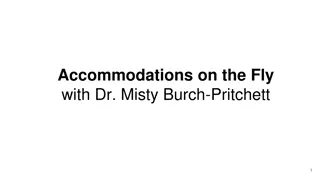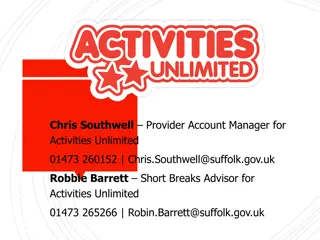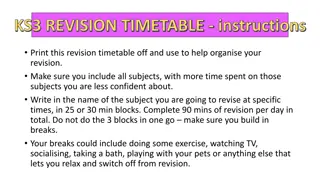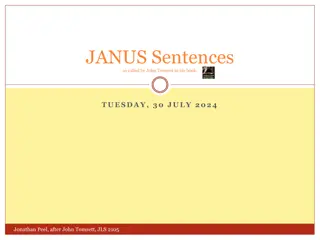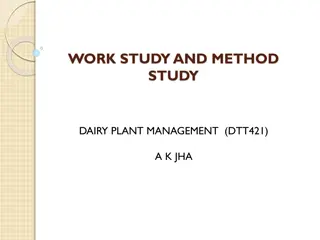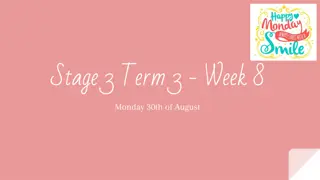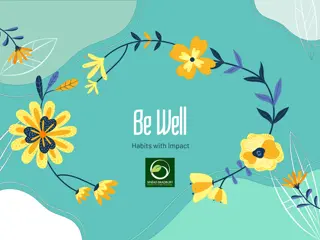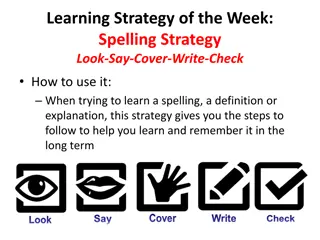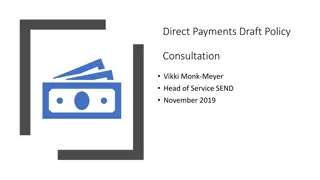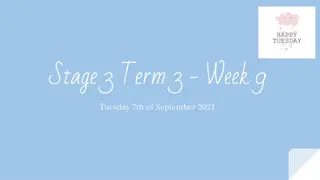
Effective Break Strategies for Enhanced Productivity and Well-being
Discover the importance of taking effective breaks to avoid burnout and enhance productivity. Learn how to incorporate self-care breaks into your routine, differentiate between short and long breaks, and identify activities to avoid during breaks. Explore the benefits of short and long breaks, along with practical tips for self-care study breaks. Enhance your study or work routine with these valuable insights!
Download Presentation

Please find below an Image/Link to download the presentation.
The content on the website is provided AS IS for your information and personal use only. It may not be sold, licensed, or shared on other websites without obtaining consent from the author. If you encounter any issues during the download, it is possible that the publisher has removed the file from their server.
You are allowed to download the files provided on this website for personal or commercial use, subject to the condition that they are used lawfully. All files are the property of their respective owners.
The content on the website is provided AS IS for your information and personal use only. It may not be sold, licensed, or shared on other websites without obtaining consent from the author.
E N D
Presentation Transcript
TAKING EFFECTIVE BREAKS Marc Roaquin | Academic Coach | Kortschak Center for Learning and Creativity
LEARNING OUTCOMES Students will learn the importance of taking breaks. Incorporate self-care breaks into their daily routine. Differentiate the difference between short breaks and long breaks.
MYTHBUSTER When on your breaks, watch TV to keep yourself occupied. FALSE (Hines, 2010)
IMPORTANCE OF BREAKS Taking regular breaks avoids burnout (Hines, 2010) Increases productivity, socialization Increased physical activity levels Increased mood (Taylor, King, Shegog, Paxton, Evans-Hudnall, Rempel & Yancey, 2013)
THINGS TO AVOID DURING BREAKS Snacking on junk food Watching TV Checking social media Taking naps longer than 30 minutes (Henning, Jacques, Kissel, Sullivan & As-Webb, 2014)
SELF-CARE STUDY BREAKS Take a walk Drink water Stretch Go outside Eat a healthy snack
SHORT BREAKS Short breaks are typically 30-seconds to a few minutes Short breaks improved worker productivity (Henning, Jacques, Kissel, Sullivan & As-Webb, 2014). Short breaks provides an opportunity for a psychological detachment (Burkland, 2013)
LONG BREAKS Long breaks are usually 30 to 45 minutes Leave your study space for leisure Gives the ability to schedule meals Incorporating a restorative break interrupts escalating moods (Plummer, 2017)
REFERENCES Burkland, D. S. (2013). The Effects of Taking a Short Break: Task Difficulty, Need for Recovery and Task Performance. M.S. Thesis. University of Wisconsin-Stout: U.S. Galinsky, T., Swanson, N., Sauter, S., Dunkin, R., Hurrell, J., & Schleifer, L. (2007). Supplentary breaks and stretching exercises for data entry operators: a follow-up field study. American Journal of Industrial Medicine 50:519 52 Henning, R. A., Jacques, P., Kissel, G. V., Sullivan, A. B., & As-Webb, S. M. (2014). Frequent short rest breaks from computer work: effects on productivity and well-being at two field sites. Ergonomics, 78-91. Hines, S. (2010).Productivity for librarians : how to get more done in less time. Retrieved from https://ebookcentral.proquest.com Taylor, W.C., King, K.E., Shegog, r., Paxton, R.J., Evans-Hudnall, G. L., Rempel, D.M., & Yancey, A.K. (2013). Booster Breaks in the workplace: participants perspectives on the health-promoting work breaks. Health Education Research, 414-425 Plummer, K. (2017) Important things to remember about restorative breaks. Retrieved from https://kevinplummerphd.com/restorative-breaks/

